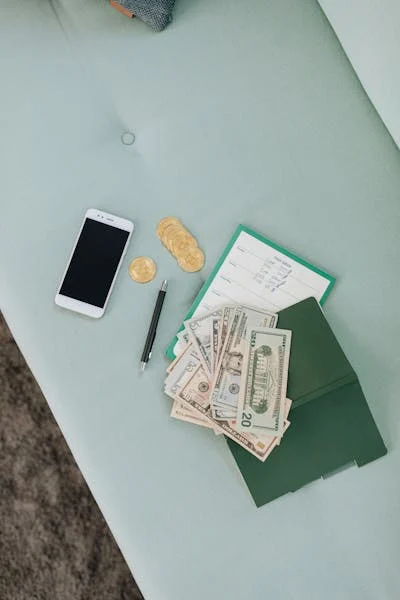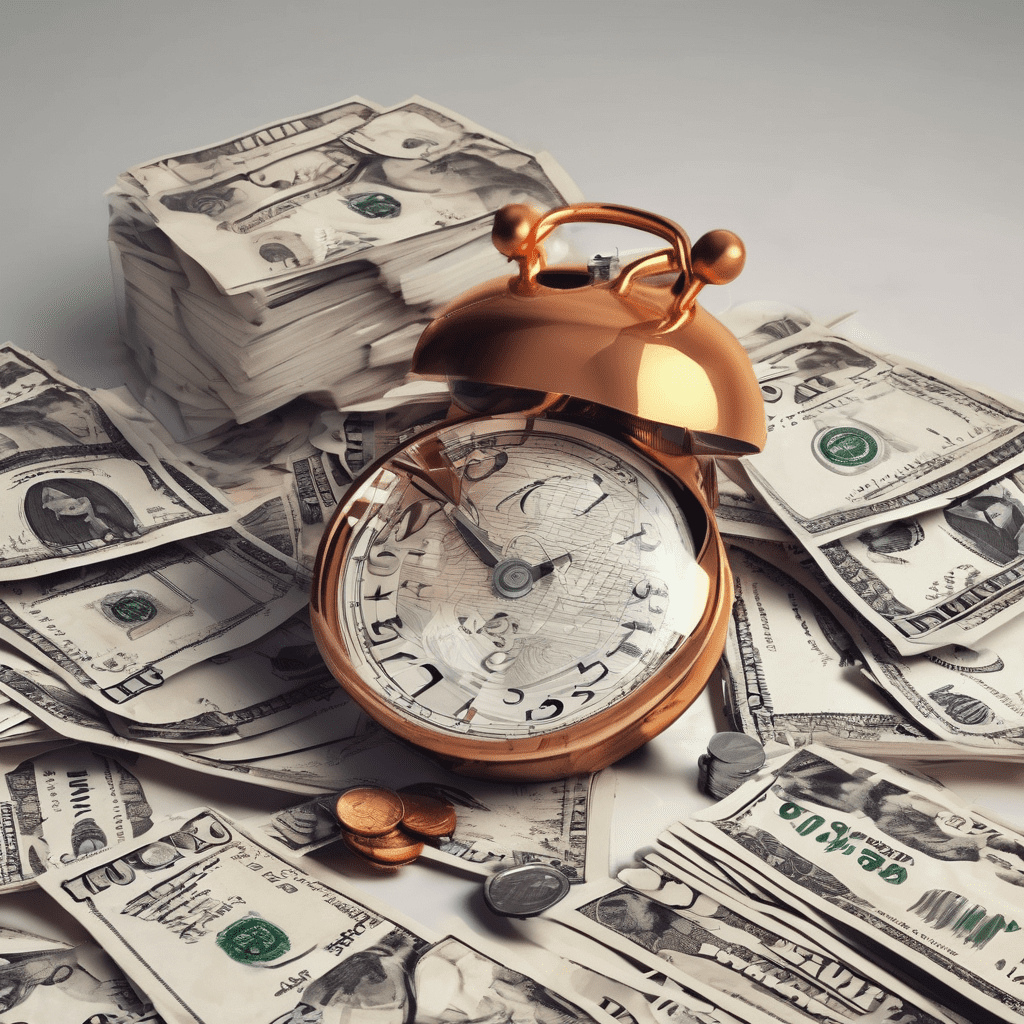The Power of Consistency: Small Steps, Big Impact
Building an emergency fund isn’t a sprint; it’s a marathon. The key lies in consistency – saving regularly, even small amounts, adds up remarkably over time. Don’t underestimate the impact of:
Table of Contents
- The $5-a-day Challenge: Save the cost of a fancy coffee daily – that’s nearly $2,000 annually!
- Leftover Change: Round up purchases, depositing the spare change into your emergency fund. There are even apps that do this automatically.

Real-Life Inspiration
- Sarah, a single mom, saved just $20 per week. After a year, she had enough to cover a major car repair without resorting to credit cards.
- John and Emily skipped one restaurant meal a month. That extra money became the base of their emergency fund, now covering several months of expenses.
Motivational Quote: “The journey of a thousand miles begins with a single step.” – Lao Tzu
Cut Costs Without Sacrifice: Smart Strategies for Saving
Finding pockets of savings doesn’t have to mean deprivation. Here are actionable ways to stretch your budget across key areas:
Subscriptions:
- Ruthlessly Review: Take inventory of streaming services, memberships, and auto-renewals. Cancel any unused or underutilized options.
- Negotiate Rates: Call cable, internet, or cell phone providers. Often, simple inquiry can uncover better deals or promotional offers.
- Seek Alternatives: Explore free library subscriptions for ebooks, audiobooks, and even streaming content.
Housing:
- Roommate Potential: If feasible, renting out a spare room could significantly offset housing costs.
- Assess the Market: If renting, explore if relocating to a slightly lower-cost area is viable without significantly impacting your commute or lifestyle
- Refinancing (Owners): Take advantage of lower interest rates by refinancing your mortgage.
Food:
- Plan Ahead: Meal planning drastically reduces impulse buys. Create a week’s menu before grocery shopping.
- Embrace Coupons: Apps and clipping still yield savings. Don’t forget store loyalty programs.
- Go Generic: Store brand items are often as good as name brands at a fraction of the cost.
Entertainment:
- Free is Fun: Explore parks, museums with free days, local events, or borrow from the library.
- At-Home Options: Swap movie nights out with streaming services and popcorn, or host game nights with friends.
- Community Connection: Many communities offer free or low-cost fitness classes, book clubs, or other activities for socializing.
Important Note: Lifestyle changes don’t need to be drastic. Small shifts in several areas can collectively make a huge impact on your emergency fund goals.
Boost Your Savings with a Side Hustle
Supplementing your regular income with a side hustle is a powerful way to supercharge your emergency fund progress. Here’s a taste of flexible options:
- Leverage Your Skills: If you have marketable skills (writing, editing, design, etc.), freelance websites like Upwork and Fiverr offer project-based opportunities.
- Delivery Gigs: Apps like DoorDash or Instacart let you set your own hours for food and grocery deliveries.
- Pet Passion: If you love animals, dog walking or pet sitting through sites like Rover can be both lucrative and enjoyable.
- Online Options: Taking surveys, testing websites, or reselling gently used items on platforms like Poshmark require minimal upfront investment.
Key Advantages of Side Hustles:
- Flexibility: Most side gigs let you work on your own schedule, ideal when fitting them around existing commitments.
- Scalability: As your time or availability increases, you can often take on more work and boost your income.
- Testing the Waters: A side hustle is a low-risk way to explore a possible career change or develop new skills.
Starting Tip: Choose a side hustle that aligns with your interests or skills for greater enjoyment and potential success.
Step 4: Automate and Accelerate Your Savings – Your Emergency Fund on Autopilotpen_spark

Let’s face it: Manually transferring money to your emergency fund every month can be a chore, and sometimes, life gets in the way. That’s why automating your savings is a game-changer. It’s like putting your emergency fund on autopilot, ensuring consistent contributions without you having to lift a finger. Here’s how to supercharge your savings:
The Power of Autopilot:
This is where the magic happens. Set up automatic transfers from your checking account to your dedicated emergency fund savings account. These transfers can coincide with your paydays, making it even easier to save consistently. Even small amounts like $25 or $50 per paycheck can accumulate surprisingly fast over time.
Benefits of Automating Your Savings:
- Consistency: You’ll never miss a contribution, even if life gets hectic.
- Habit Formation: Automating savings makes it a regular part of your financial routine, like brushing your teeth.
- No Temptation: The money goes directly to your emergency fund, removing the temptation to spend it elsewhere.
- Peace of Mind: Knowing you’re consistently building your financial safety net can reduce stress and anxiety.
Windfall Wins:
Unexpected money can be a major catalyst for building your emergency fund. Whenever you receive a tax refund, work bonus, side hustle income, or a cash gift, consider making a significant deposit into your emergency fund. These windfalls can accelerate your progress and help you reach your savings goals faster.
Boost Your Savings with Round-Ups: The Spare Change Superpower
Round-ups are a secret weapon for boosting your savings effortlessly. Offered by many banks and financial apps, this feature transforms your everyday spending into a savings opportunity. Here’s how it works:
The Round-Up Magic:
- Spend & Save: Every time you use your debit card or linked account for a purchase, the transaction amount is rounded up to the nearest whole dollar.
- Spare Change Savings: The difference between the actual purchase amount and the rounded-up amount (your “spare change”) is automatically transferred to a designated savings account or your emergency fund.
- Small Change, Big Impact: While each round-up might seem insignificant, these small amounts accumulate over time, making a noticeable difference in your savings balance.
Real-World Examples:
- Coffee Run: You buy a latte for $4.25. The round-up feature kicks in, rounding it up to $5.00. The extra $0.75 goes straight to your savings.
- Grocery Trip: Your total bill comes to $56.82. It’s rounded up to $57.00, adding $0.18 to your savings.
- Monthly Subscriptions: Your streaming service costs $11.99. The round-up bumps it to $12.00, saving you another $0.01.
Benefits of Round-Ups:
- Painless Savings: You save without even thinking about it. It’s automatic and seamless.
- Builds a Habit: Round-ups encourage consistent saving, even in small increments.
- Motivation: Seeing your savings grow with each round-up can be motivating and inspiring.
- Flexibility: Many apps allow you to customize your round-up settings, choosing how often they occur and where the money is saved.
Who Offers Round-Ups?
Many banks and financial institutions offer round-up features within their apps or online banking platforms. Popular personal finance apps like Acorns, Chime, and Qapital also offer round-up options.
Turn Pennies into Dollars:
Don’t underestimate the power of your spare change! By harnessing round-ups, you can effortlessly turn those pennies into dollars and watch your savings grow faster than you ever imagined. It’s a simple, effective way to reach your financial goals and build a brighter financial future.pen_sparktunesharemore_vert
Key Point:
Automating your savings eliminates the need for willpower and ensures consistent contributions to your emergency fund. It’s a simple yet powerful strategy that can significantly accelerate your progress and bring you closer to financial peace of mind.
Emergency Fund FAQ: Your Questions Answered
Got questions about building and using your emergency fund? You’re not alone! Here are answers to some common concerns:
Q: How much should I really have in my emergency fund?
A: While a starting goal of $1,000 is a great first milestone, the ideal amount varies based on your individual situation. A general rule of thumb is to aim for 3-6 months’ worth of essential living expenses. This ensures a buffer that covers housing, food, utilities, transportation, and other crucial bills if you were to face a sudden job loss or unexpected expenses.
However, if you have dependents, irregular income, or are the sole income earner in your household, consider saving even more. 6-12 months’ worth of expenses may be more appropriate for added security.
Q: Where’s the best place to keep my emergency fund?
A: Your emergency fund should be easily accessible but not so easily accessible that you’re tempted to spend it. A high-yield savings account is the ideal choice. These accounts offer interest rates higher than regular savings accounts, allowing your money to grow slightly over time. Look for accounts with no monthly fees or withdrawal penalties.
Q: Is it okay to use my emergency fund for non-emergencies?
A: The short answer is no. The purpose of an emergency fund is to provide a safety net for unexpected events, not to fund vacations, new clothes, or other non-essential items. Dipping into it for wants rather than true emergencies can quickly deplete your savings and leave you vulnerable if a real crisis occurs.
Q: I have debt. Should I still build an emergency fund?
A: Absolutely! Even if you’re focused on paying off debt, having a small emergency fund is crucial. It can prevent you from going further into debt if unexpected expenses arise. Start by aiming for a smaller goal, like $500 or $1,000, while continuing to make progress on your debt. You can work on both financial goals simultaneously, gradually increasing your emergency fund over time.
Q: What qualifies as a true emergency?
A: True emergencies are unexpected events that significantly impact your finances or well-being. Examples include job loss, medical emergencies, major car repairs, home repairs (like a leaking roof), or an unexpected death in the family.
Remember: Your emergency fund is a financial lifeline, so use it wisely and only for situations where you truly need it. By following these guidelines and building a robust emergency fund, you’ll gain financial security and peace of mind, knowing you’re prepared for whatever life throws your way.
